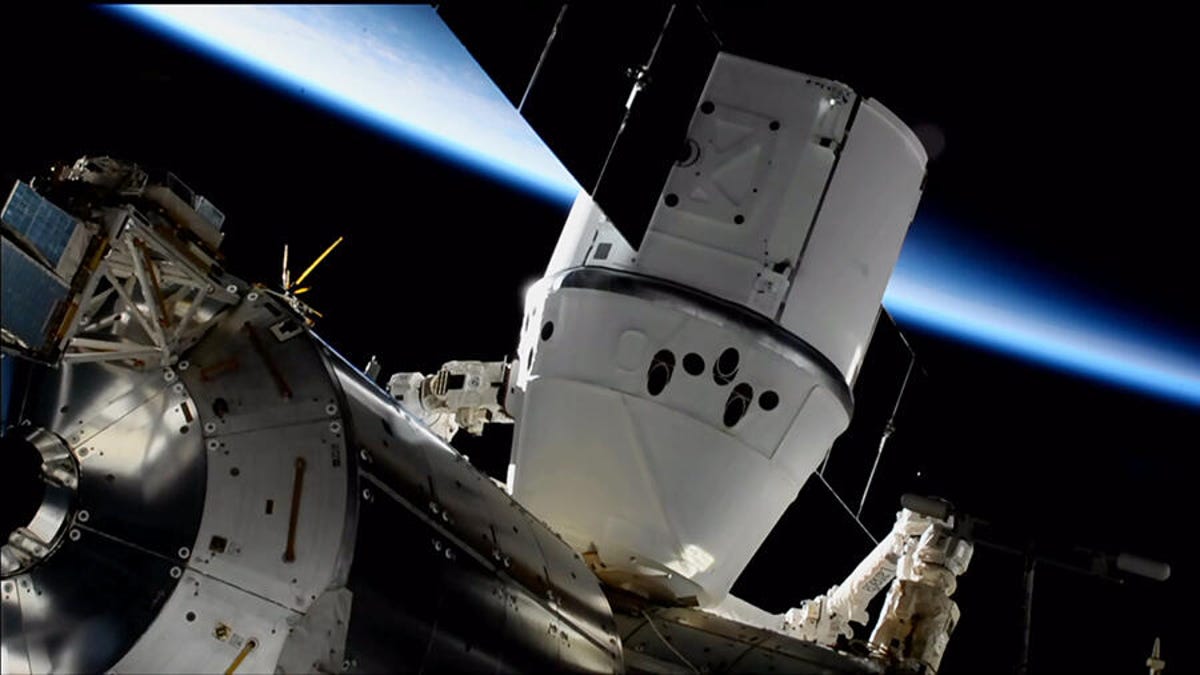ISS captures final SpaceX Dragon 1 cargo capsule, marking end of an era
The long arm of the space station just snagged its last first-gen Dragon.
Enjoy your impending retirement, Dragon 1. You did well.
The crew of the International Space Station captured a SpaceX Dragon 1 cargo capsule early on Monday morning using the Canadarm2, a robotic arm that snags the vessel and then moves it into docking position. This is the last time the ISS will use that arm to catch a Dragon.
.@Astro_Jessica commanded the @CSA_ASC #Canadarm2 to capture the @SpaceX #Dragon at 6:25am ET today. Ground controllers will take over and remotely install it to the station in a couple of hours. Read more... https://t.co/UpY9UTwJ2c pic.twitter.com/XeFLOphtgm
— Intl. Space Station (@Space_Station) March 9, 2020
The CRS-20 mission launched on a Falcon 9 rocket on Friday as the final mission for SpaceX's CRS-1 contract with NASA . "CRS" stands for "Commercial Resupply Services."
SpaceX signed up for a fresh CRS-2 contract with the space agency in 2016. Those future resupply missions will use the next-generation Dragon 2 capsule, which autonomously docks directly with the ISS, no arm needed.
Dragon 1 has a long and storied history. In 2012, it became the first commercial spacecraft to dock with the station. Over the course of the contract, SpaceX delivered more than 94,000 pounds (43,000 kilograms) of supplies, experiments, and equipment to the ISS.
"Future missions under the CRS-2 contract will utilize the Dragon 2 spacecraft and will return to Earth with a water landing in the Atlantic Ocean," said NASA in a release last week.
For a preview of how the Dragon 2 cargo spacecraft will hook up with the ISS, check out SpaceX's successful Crew Dragon demonstration flight in March 2019. Elon Musk's company is now closing in on sending actual NASA astronauts to the ISS using the next-gen Dragon capsule.
The last Dragon 1 is now installed on the ISS and is scheduled to stay until April, when it will return to Earth for a splashdown in the Pacific Ocean. This will ultimately mark the passing of the torch from Dragon 1 to Dragon 2.


